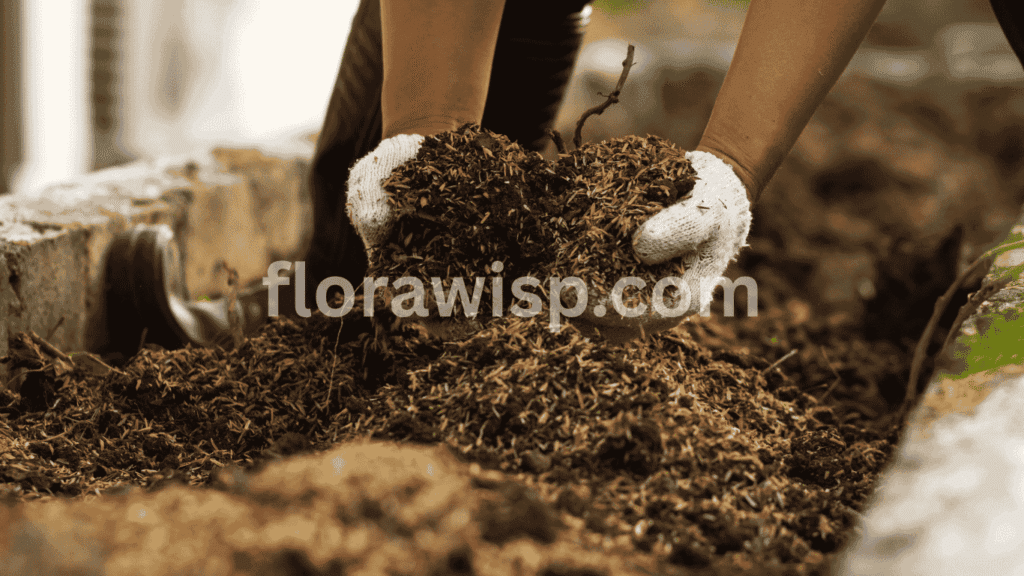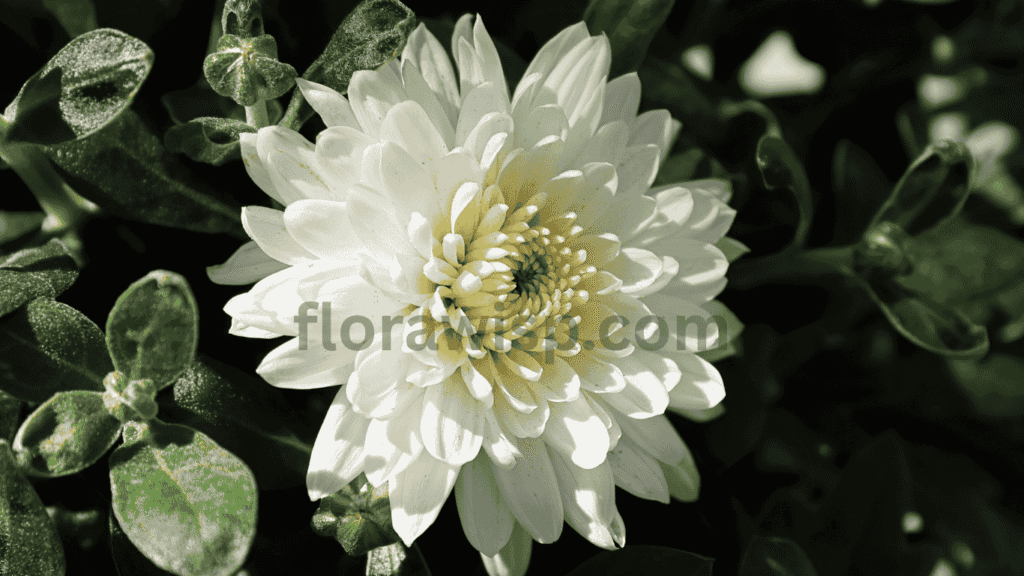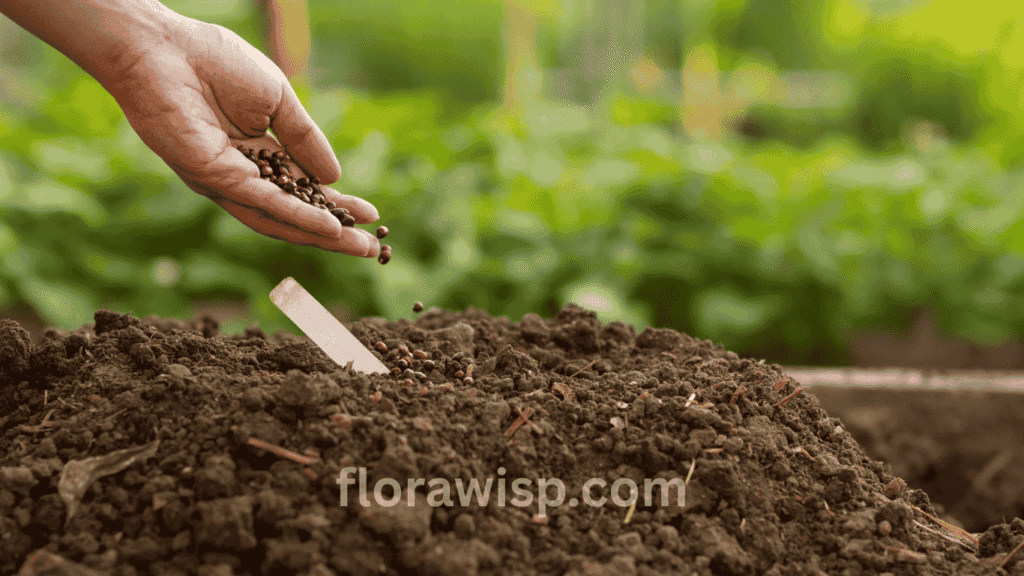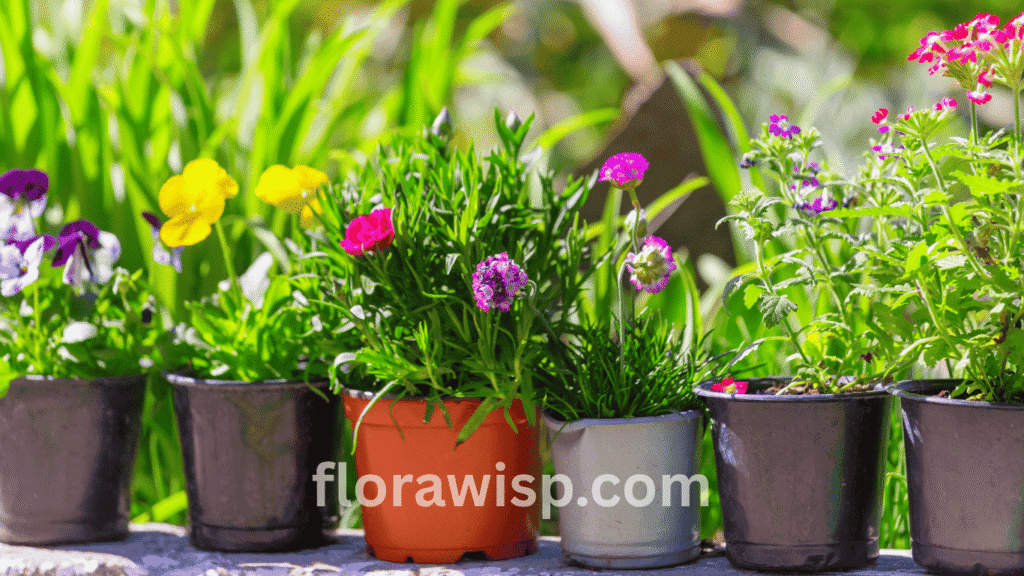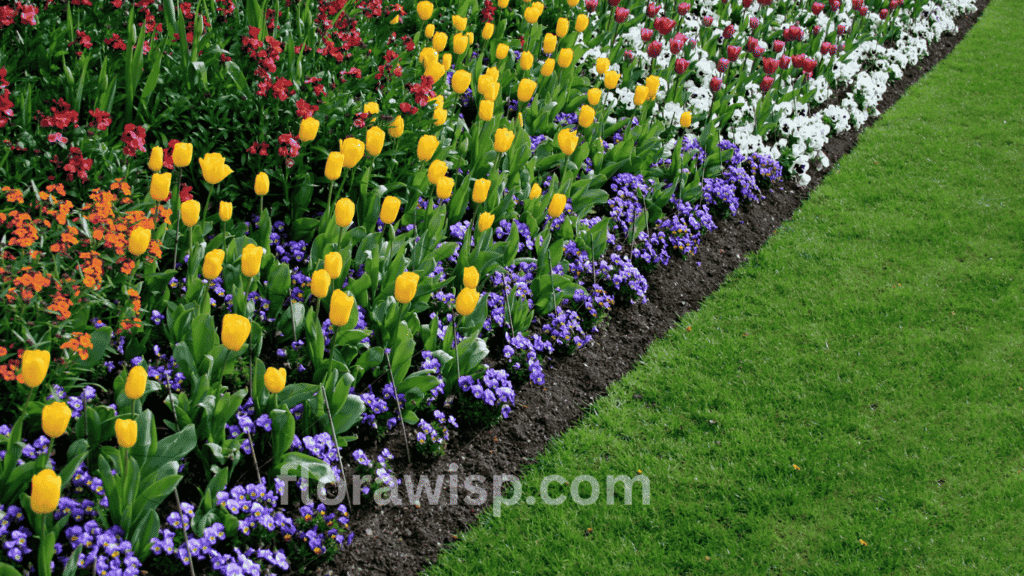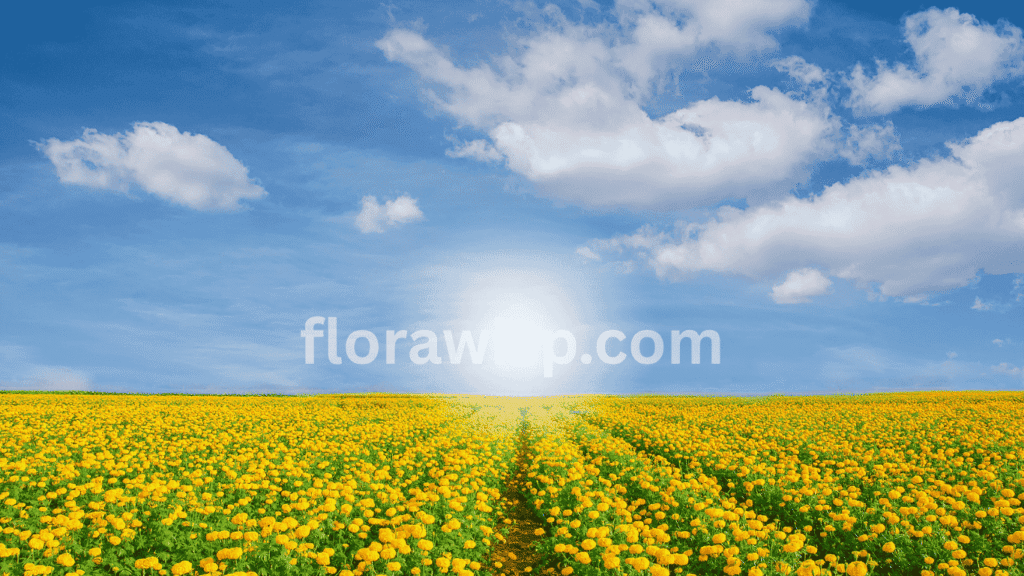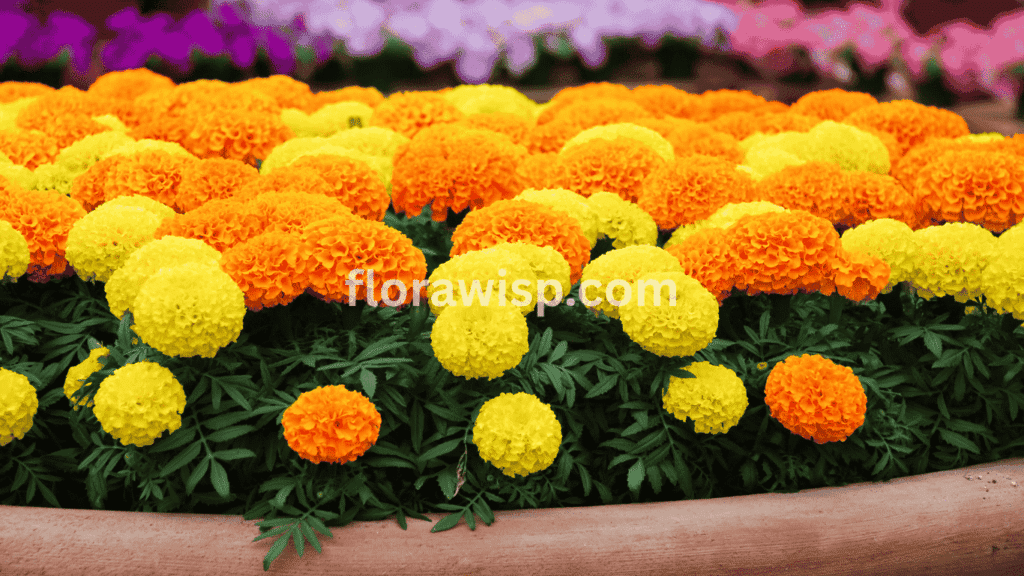The best soil for flowers does more than support roots; it unlocks vibrant blooms, healthier plants, and longer-lasting color. Uncover 7 expert secrets most gardeners miss and avoid the soil mistakes that cost you flowers. If your flowers aren’t blooming the way you expected, don’t blame your watering schedule just yet look beneath the surface. Over the years, working with backyard gardeners and commercial growers alike, I’ve learned this truth: your soil plays a crucial role in every stage of planting flowers, from root development to full bloom.
In This Article
Years ago, my zinnias struggled to stay upright, even with full sun and regular watering. The problem? Compacted, lifeless soil. Once I swapped in a loamy, compost-rich mix, those same plants flourished.
In this guide, I’ll share seven proven secrets to choosing and maintaining the best soil for flowers, insights earned through years of hands-on experience, trial and error, and good old-fashioned dirt-under-the-nails gardening. For a step-by-step guide on starting blooms from scratch, check out How to Plant Flowers from Seeds.
1. Why Soil Matters More Than You Think
When it comes to growing flowers, soil is not just “dirt” it’s the living foundation your entire garden depends on. In my early days of gardening, I learned this the hard way.
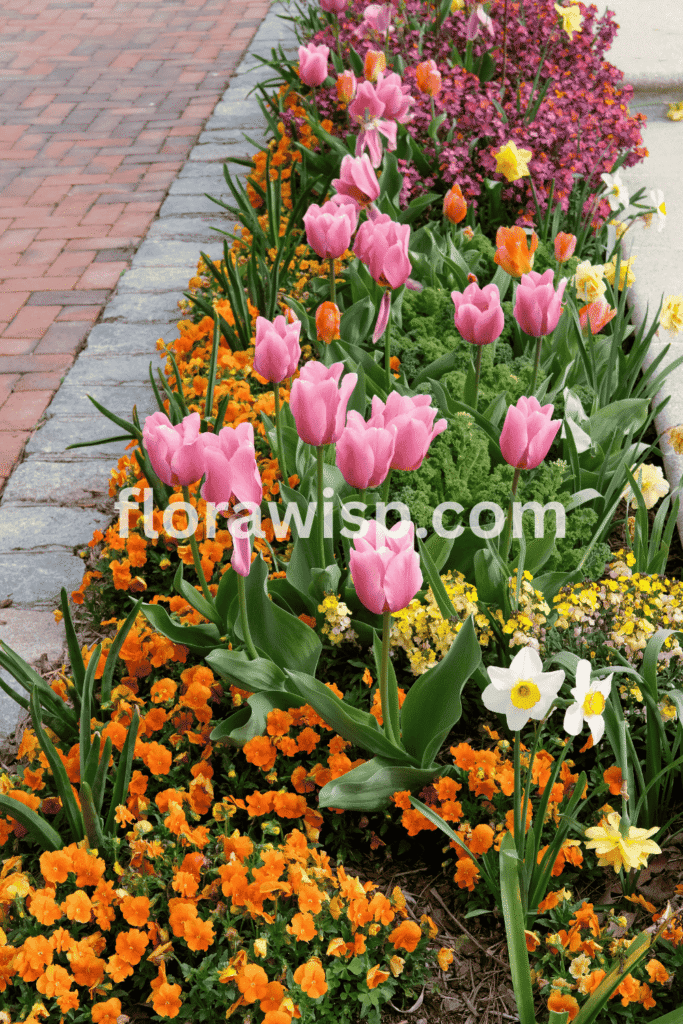
I had two identical flower beds of the same size, same sunlight, same watering schedule. But only one was blooming. The difference? The best soil for flowers. One was rich, loamy, and filled with compost. The other? Compacted subsoil I hadn’t touched. The marigolds in that bed drooped constantly and barely flowered. That season taught me: even the toughest plants can fail without the right soil.
So, what makes the best soil for flowers?
- Supports root growth by allowing roots to breathe and spread
- Retains moisture without becoming soggy
- Drains excess water to prevent root rot
- Delivers nutrients in a form your flowers can actually absorb
- Hosts beneficial microbes that protect and nourish your plants
This balance is what I call flowering soil that doesn’t just hold a plant up, but actively helps it thrive.
Many gardeners ask me, “Why are my flowers not blooming?” or “Do I need special soil for flowers?” The answer is yes flowers and soil are a team, and poor soil is often the root of stunted growth, yellowing leaves, or lack of blooms.
If you want consistent color, strong stems, and full blossoms, don’t overlook your soil. Invest in improving its texture, structure, and biology. It’s not just what you plant, but what you plant into and your flowers will show the difference.
2. The Best Soil for Flowers: What to Look For
If you’ve ever wondered why your flowers struggle to thrive even with full sun and regular watering chances are, it’s the soil. In my years of flower gardening, I’ve learned this: no amount of sunlight or fertilizer can fix poor soil.
So, what is the best soil for flowers? In nearly every case, it’s loamy soil, a perfect balance of sand, silt, and clay that retains moisture, drains well, and holds nutrients your plants can actually use. It’s the gold standard for both garden beds and containers.
My go-to flower soil mix:
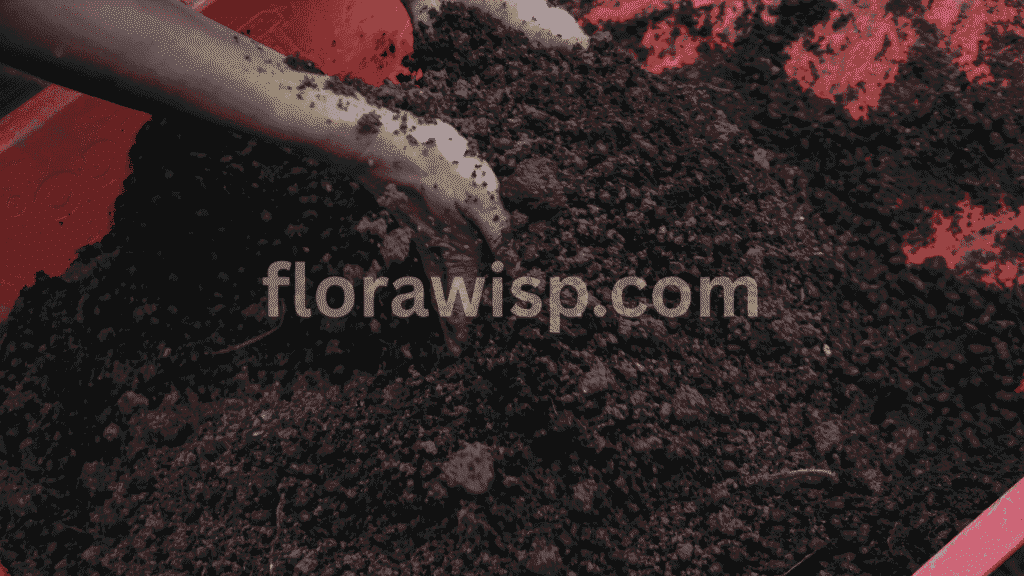
- 40% aged compost (not raw manure fully broken down for nutrient delivery)
- 30% coconut coir or peat moss (for moisture retention and softness)
- 20% perlite (adds air pockets so roots can breathe)
- 10% native topsoil or worm castings (introduces beneficial microbes and minerals)
This is the same mix I use in my raised beds, planters, and hanging baskets. If I’m working with heavy clay, I double the compost and leave out the native soil entirely. The results? Fuller blooms, healthier stems, and fewer disease problems.
Signs you’ve got good soil for planting flowers:
- Crumbly texture that’s easy to work with
- Smells fresh and earthy (not sour or stagnant)
- Active with worms and insects after rain
Pro tip: Start with rich, living soil and your flowers will reward you every single time.
3. What’s the Best pH for Flowering Stage in Soil?
When it comes to vibrant blooms, sunlight and water alone aren’t enough the best soil for flowers must also have the right pH balance. Soil pH is a silent factor that can make or break your garden. Over the years, I’ve seen perfectly fertilized flowers underperform simply because the best soil for flowers wasn’t present especially when the pH was out of range.
The best pH for the flowering stage in soil is typically between 6.0 and 7.0. In this range, plants can fully absorb key nutrients like phosphorus, which directly drives flower production. Outside this window too acidic or too alkaline even nutrient-rich soil can leave your plants starving.
I once planted pink hydrangeas in acidic soil (pH around 5.3), and to my surprise, they turned blue. It was a striking visual lesson in how soil pH impacts not just health, but flower color and overall performance. Choosing the best soil for flowers includes knowing and adjusting the pH to unlock your garden’s full potential.
How to test soil pH:
- Use a digital soil pH meter for fast, reliable readings
- Or try a DIY soil test kit affordable and widely available
How to adjust pH:
- To raise pH (reduce acidity): Add garden lime or wood ash
- To lower pH (reduce alkalinity): Use elemental sulfur or peat moss
Making changes slowly and rushing can shock your plants. Always retest after amending.
If your flowers aren’t blooming despite good sunlight and water, don’t overlook pH. Fixing this one hidden issue can transform tired soil into the best soil for flowers and unlock your garden’s full potential.
4. Flowers That Thrive in Specific Soil Conditions
Flowers That Like Wet Soil
If your flower beds stay damp or are located in low spots that never quite dry out, you’re not alone. I’ve worked with several clients whose gardens sat on heavy clay or near downspouts conditions that left most flowers wilting or rotting at the base.
But some flowers actually thrive in wet soil. My top performers include:
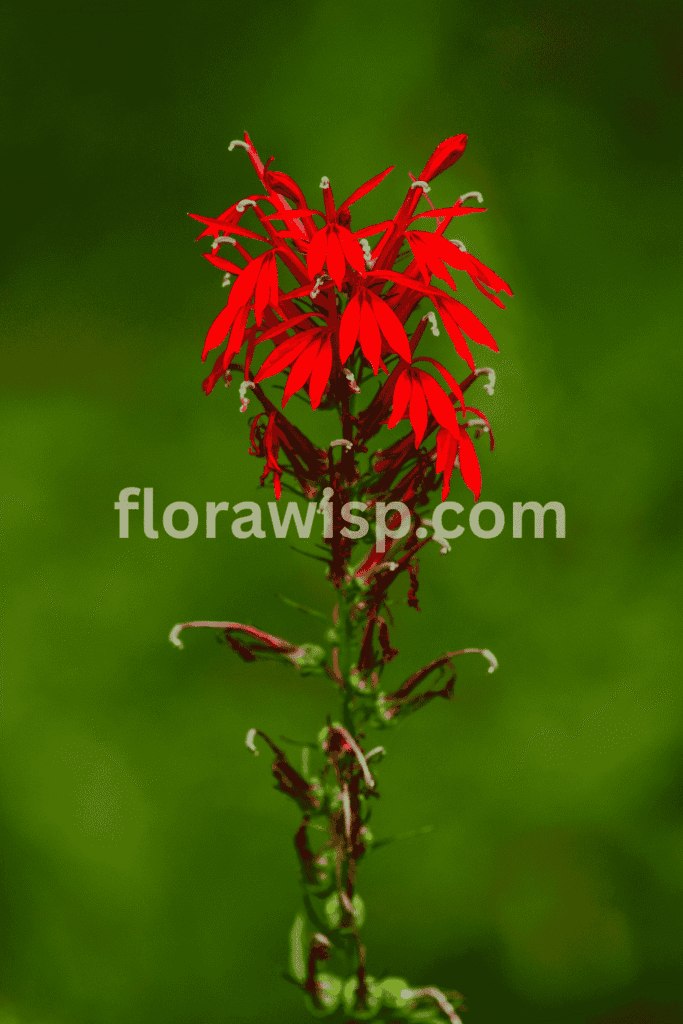
- Cardinal flower : brilliant red spikes that love wet feet
- Japanese iris : elegant and made for soggy areas
- Bee balm : aromatic and mold-tolerant
- Ligularia : big-leafed and bold in shade and moisture
Pro tips to retain moisture and reduce rot:
- Add compost and coconut coir to lighten clay while retaining water
- Mulch with bark or straw to regulate temperature and slow evaporation
- Avoid full-sun raised beds, which dry out too fast for moisture lovers
Plant the right varieties and let the soggy spots become blooming assets.
Flowers That Like Acidic Soil
I learned the hard way that not all flowers tolerate acidic soil. Years ago, I planted roses under a pine tree, a beautiful location, but too acidic. They yellowed, grew leggy, and barely bloomed. I replaced them with azaleas and they exploded with color the following spring.
If your soil pH sits below 6.0, lean into acid soil flowers like:
- Azaleas
- Camellias
- Blue hydrangeas
- Rhododendrons
- Gardenias
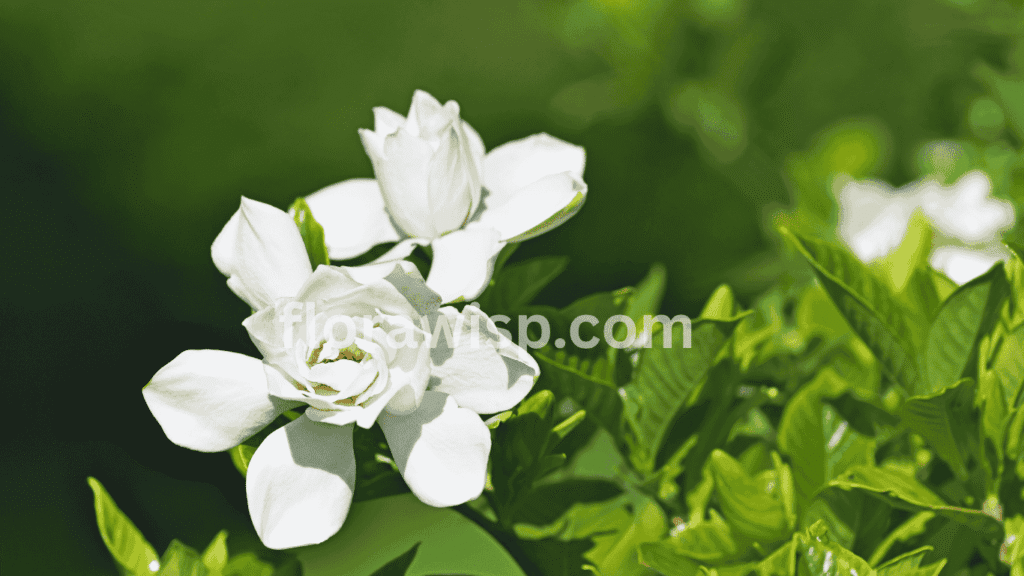
To gently lower pH and nourish flowers that need acidic soil, I add pine needles, coffee grounds, or cottonseed meal over time. These slow-release inputs support healthy, long-term soil structure and help build the best soil for flowers that thrive in acidic conditions.
Not sure what flowers like acidic soil? Start by testing your pH and observing what naturally thrives in your yard. The best approach is to work with your soil, not against it — and let your flower choices follow the path to the best soil for flowers in your specific environment.
5. Flowers for Clay Soil & How to Improve It
Clay soil is heavy, compacted, and holds too much water but don’t write it off. I turned my side yard’s dense clay into a thriving perennial bed by improving its structure over time. With consistent additions of compost, gypsum, and sand, I gradually transformed it into the best soil for flowers suited to that environment.
Flowers for Clay Soil
Clay soil often gets a bad rap and understandably so. It’s heavy, dense, and tends to hold water like a sponge, suffocating roots if you’re not careful. But as someone who’s transformed thick, unworkable clay into a blooming haven, I can assure you: it’s not a deal-breaker, it’s a challenge worth tackling.
In my side yard, I once faced a patch of compacted red clay that baked hard in summer and turned to muck in winter. But instead of giving up, I leaned into choosing perennial flowers for clay soil and focused on creating the best soil for flowers that could support their long-term growth. The results were colorful, resilient blooms that surprised even seasoned gardeners.
Here are my top performers for flowers for clay soil:
- Daylilies – remarkably resilient and colorful
- Coneflowers (Echinacea) – thrive even in compacted conditions
- Black-eyed Susans – bright, bold, and drought-tolerant once established
- Coreopsis – long bloomers with minimal fuss
- Asters – reliable fall color and clay-friendly roots
How to Improve Clay Soil for Flowers
Improving soil for flowers in a clay-heavy garden isn’t about quick fixes, it’s about consistency. Over three growing seasons, I saw my clay beds turn loose and workable thanks to:
- Double digging: Loosening deep layers to give roots room to breathe
- Blending in coarse sand and aged compost: Avoid peat too much moisture retention
- Adding gypsum: A game-changer for breaking apart clay particles
- Never walking on wet beds: Compaction undoes all your hard work
The result? Healthier root systems, deeper growth, and far fewer drainage issues. If you’re aiming for the best soil for flowers, even clay can be your starting point with the right steps.
6. Why Flowers Die in Poor Soil
When flowers suddenly wilt or stop blooming, most gardeners assume it’s bad luck or too much sun. But from years of hands-on experience, I can tell you: it’s usually the soil for flowers that’s to blame, not the plant itself.
Poor soil conditions quietly sabotage your plants by:
- Compaction – suffocates roots and traps water
- Drainage issues – lead to root rot, especially in clay-heavy beds
- Imbalanced pH – blocks access to key nutrients like phosphorus
- Depleted nutrients – soil that’s been overused without replenishment becomes lifeless
I once lost nearly a full border of petunias after a stretch of heavy rain compacted the bed. The flowers looked gone but the roots still had life.
How to Revive Dead Flowers in Soil
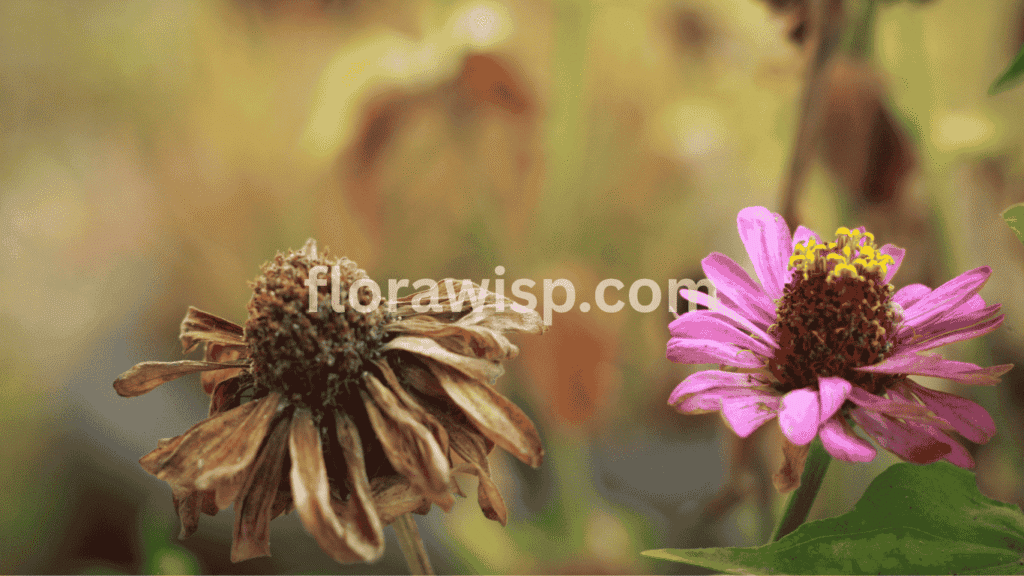
If you’re wondering how to revive dead flowers in soil, don’t give up too soon. Many times, plants can bounce back if you act fast and smart.
Here’s what I’ve done successfully more than once:
- Remove any truly dead plants (no green tissue left)
- Check moisture levels and drainage : overly soggy soil is a red flag
- Test and amend the pH : aim for 6.0–7.0 for most flowering plants
- Loosen compacted beds with a garden fork or by mixing in compost and perlite
- Replant with intention : choose hardy varieties and water gently at the root zone
- Top-dress with compost to reintroduce nutrients and beneficial microbes
Pro tip: Always check the root health before tossing a plant. If the roots are still white and firm, your flower may just need a healthier home with true flowering soil that breathes, drains, and feeds.
I’ve brought back wilting zinnias and faded pansies this way. A little soil care can mean the difference between tossing and thriving.
7. Flowering Soil Additives: Compost, Mulch, and Fertilizer
Soil additives can supercharge your blooms if used wisely. I rely on three key boosters throughout the season:
- Compost: Builds structure, feeds microbes, improves moisture
- Mulch: Retains water, prevents weeds, regulates soil temp
- Flower-friendly fertilizer: Balanced N-P-K (like 5-10-5 or 10-20-10) promotes flowering for a complete breakdown, check out my guide on the Best Fertilizer for Flowers.
Avoid these common mistakes:
- Over-fertilizing (too much nitrogen = lots of leaves, no blooms)
- Applying mulch too thickly (3 inches is plenty)
- Using raw manure it’s too strong and can burn plants
My go-to timeline:
- Compost in early spring
- Mulch once soil warms up
- Fertilizer at bud stage, every 3–4 weeks
This simple routine transformed my early summer roses and zinnias from average to show-stopping.
Final Thoughts
Choosing the best soil for flowers isn’t about buying a fancy bagged mix it’s about understanding what your plants need and building soil that delivers. From texture and pH to additives and structure, every detail counts.
Your soil is your garden’s silent hero. Treat it with care, amend it wisely, and pay attention to how your flowers respond. Over time, you’ll build a blooming space that rewards you season after season.
Want to dig deeper? Explore our beginner-friendly guides on Planting flowers or explore container flower gardening for more practical, hands-on tips.
FAQs
Q. What is the best soil for flowers in pots or containers?
The best soil for flowers in pots is a lightweight, well-draining mix enriched with organic matter. I recommend blending aged compost, coconut coir, and perlite to ensure good aeration and moisture retention. Avoid using garden soil alone; it compacts easily in containers and suffocates roots. I’ve had the best blooms in containers when I used a custom mix that stays loose and feeds plants steadily throughout the season.
Q. What flowers grow well in clay soil?
Many tough perennials thrive in clay soil once it’s slightly amended. My top choices for clay soil flowers include daylilies, coneflowers, black-eyed Susans, asters, and coreopsis. These varieties tolerate heavy, moisture-retaining soil and develop strong root systems over time. I’ve improved my clay beds by mixing in compost and gypsum without removing the clay and seen brighter blooms and deeper roots each year.
Q. What’s the ideal pH level for flowering plants?
The ideal flowering soil pH is between 6.0 and 7.0, which helps plants absorb key nutrients like phosphorus for blooming. Outside this range, even fertile soil can lead to poor flowers. I once had petunias in high-pH soil that stayed leggy and pale. Fixing the pH made all the difference. Use a soil pH meter to test regularly and adjust with lime or sulfur as needed.
Q. Can I grow flowers in acidic soil without changing it?
Yes, you can! Some plants actually prefer acidic conditions. Acidic soil flowers like azaleas, gardenias, camellias, and blue hydrangeas thrive when the pH is below 6.0. In one shaded, pine-covered spot in my yard, I let the acidic soil be and planted acid-loving shrubs that bloomed beautifully. Instead of fighting your soil, plant varieties that naturally match your native conditions.
Q. How do I know if my soil is killing my flowers?
If your flowers are wilting despite watering, not blooming, or showing yellow leaves, poor soil health for flowers could be the cause. Compacted soil, wrong pH, or nutrient depletion are common culprits. I once lost an entire patch of marigolds to waterlogged, compacted soil. Test drainage, check pH, and look at root health. Healthy roots should be white and firm, not mushy or blackened.
Sources:
Penn State Extension : Home Garden Soil Management
Royal Horticultural Society : Soil pH and Testing Guide
Gardener, M.Sc. Horticulture
Elara Bennet is a gardening writer from Austin, TX, passionate about sustainable lawns and blooms. Read full bio →

